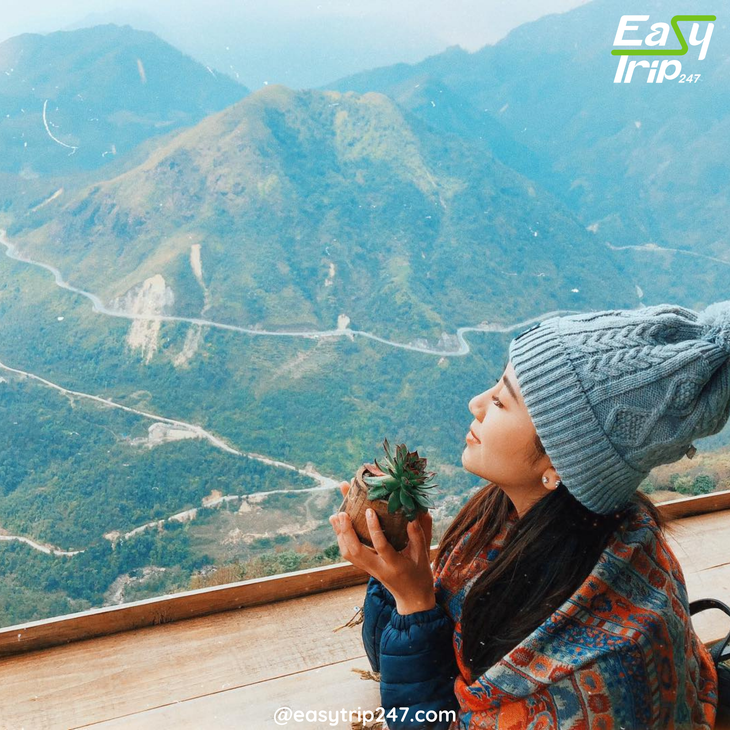Quietest Time to Visit Vietnam’s Tourist Spots: A Serene Discovery Beyond the Crowds
On
23/06/2025Reading time:
1 min
Summary:
Vietnam is a country that pulses with life, from the chaotic charm of its cities to the mesmerizing beauty of its coastlines and countryside. But for those seeking stillness amidst the energy, there is another side of Vietnam waiting to be discovered—one of calm mornings, uncrowded pathways, and peaceful exploration.

Many travelers flock to Vietnam during peak seasons, typically in late December through early April, when the weather is dry and cool. While the climate is ideal during these months, popular tourist destinations like Ha Long Bay → Đổi thành Ha Giang, Hoi An, and Sapa tend to swell with visitors. That’s why those in search of a quieter, more immersive experience should consider the shoulder and off-peak seasons—often considered by seasoned travelers as the best time to visit Vietnam for peace, authenticity, and serenity.
The months of May to early June and September to early November mark the sweet spot for quieter travel. During these times, the weather in much of Vietnam remains pleasant, with fewer tourists, reduced prices, and a more relaxed pace across the country. Whether you’re strolling through ancient temples, cycling past rice paddies, or wandering the vibrant alleyways of old towns, the absence of large crowds allows you to truly connect with the people and places around you.
Take Hoi An, for instance. Known for its golden lanterns, charming yellow buildings, and riverside ambiance, it can feel overly crowded during festivals or peak winter travel periods. But in early autumn, the crowds thin out, and the historic town reveals a slower, more soulful rhythm. It’s during these calm months that many travelers agree is the best time to visit Vietnam—when you can sip coffee by the Thu Bon River without the buzz of tour groups or take uninterrupted photos of lantern-lit nights.
Similarly, in Ha Long Bay, a world-renowned UNESCO site, the experience changes dramatically when you avoid the high season. Traveling in late spring or early autumn means you can enjoy a more tranquil cruise, savor the emerald waters and limestone karsts in near solitude, and even find better deals on overnight boats. It’s no surprise that frequent travelers mark this as the best time to visit Vietnam if you want to experience the country’s wonders without the crowds.
Even Vietnam’s bustling cities, like Hanoi and Ho Chi Minh City, take on a more laid-back vibe during these quieter months. Morning markets are still vibrant, but you’ll find fewer tourists lining up at street food stalls or squeezing into museums. Wandering around Hoan Kiem Lake or sipping egg coffee in Hanoi’s Old Quarter feels more local and less commercial. For travelers who appreciate authenticity over spectacle, the quieter months offer the best time to visit Vietnam from a cultural immersion standpoint.
The same applies to natural landscapes. In the northern highlands, Sapa becomes a misty haven when the tourism waves subside. Trekking through terraced rice fields with only the sound of your footsteps and birdsong allows you to connect deeply with nature and the ethnic communities who live there. The colors of the landscape change with the seasons—lush green in spring and golden in early autumn—making these periods the best time to visit Vietnam for scenic adventures without the pressure of crowds.
Beyond the major tourist destinations, Vietnam is dotted with hidden gems that shine brightest during the quiet seasons. Places like Ninh Binh, with its towering limestone cliffs and peaceful riverways, or the central highlands around Da Lat, come alive in a slower, dreamlike way when you’re not jostling with groups of travelers. In these regions, booking a homestay or taking a motorbike ride through sleepy villages becomes more meaningful when the tempo of life isn’t accelerated by mass tourism.
Another advantage of visiting during the off-peak months is cost. With fewer travelers, you’ll often find more affordable accommodation, better availability for activities, and more personalized service. Boutique hotels, family-run guesthouses, and local restaurants are less overwhelmed and more able to engage warmly with guests. For budget-conscious travelers or those wanting a richer, more human experience, this is clearly the best time to visit Vietnam.
Importantly, the quieter months also allow you to travel more sustainably. With less strain on infrastructure and local communities, you’re helping to support responsible tourism and reduce environmental impacts. It’s a chance to give back to Vietnam while enjoying a more mindful, intimate travel experience. In this way, the best time to visit Vietnam becomes not just a logistical choice, but an ethical one.
Timing also impacts how you interact with local traditions. During quieter times, it’s easier to participate in authentic experiences like cooking classes, craft workshops, or countryside tours. Villagers have more time to chat, answer questions, and share their stories. The moments you remember—learning to roll spring rolls in a small family kitchen or hearing folk tales from a grandmother in a village—are more likely to happen when tourism slows and personal connections deepen.
Let’s not forget how weather factors in. While Vietnam’s climate varies from north to south, the off-peak months still offer plenty of sunshine and manageable rainfall. Central Vietnam, including Hue and Da Nang, sees clearer skies in the early fall, making it an ideal region to explore in peace. Meanwhile, the Mekong Delta is at its most beautiful during the shoulder season, when floating markets buzz with locals rather than tourists. These moments define the best time to visit Vietnam for calm exploration and natural beauty.
If you’re the kind of traveler who values quiet contemplation over crowds, then the best time to visit Vietnam is when others are staying home. These offbeat travel windows, often overlooked, can offer the most enriching rewards. Fewer tourists mean more room to breathe, reflect, and truly appreciate Vietnam’s extraordinary offerings—its landscapes, its culture, and its people.
In a world that increasingly moves fast and loud, Vietnam offers an oasis of calm for those who know when to look. Whether it’s early mornings in sleepy villages, a silent boat ride through misty karst formations, or watching the sun rise over rice fields with no one else in sight, these are the experiences that stay with you long after your trip ends. And they almost always happen during the best time to visit Vietnam—when the world seems to pause just enough for you to see it clearly.
So, if you're dreaming of a Vietnam that whispers instead of shouts, that invites instead of entertains, plan your trip for the quiet months. Escape the crowds, slow down your pace, and discover a side of Vietnam that few tourists ever see. You'll find that the best time to visit Vietnam is not just about climate or deals—it's about finding the perfect moment to truly connect.
Design Your Tour Today And Get A Quote. Contact Us Here: +84.975.504.825
Source: Easytrip247 Team compiled.
